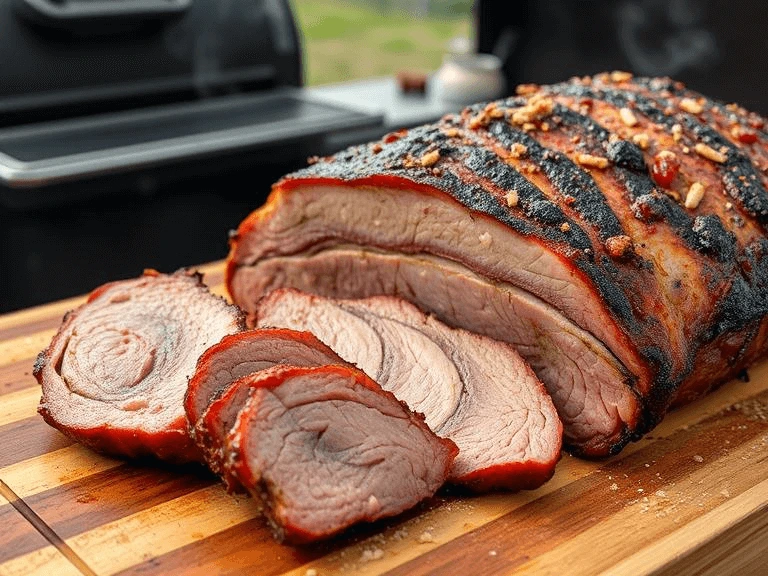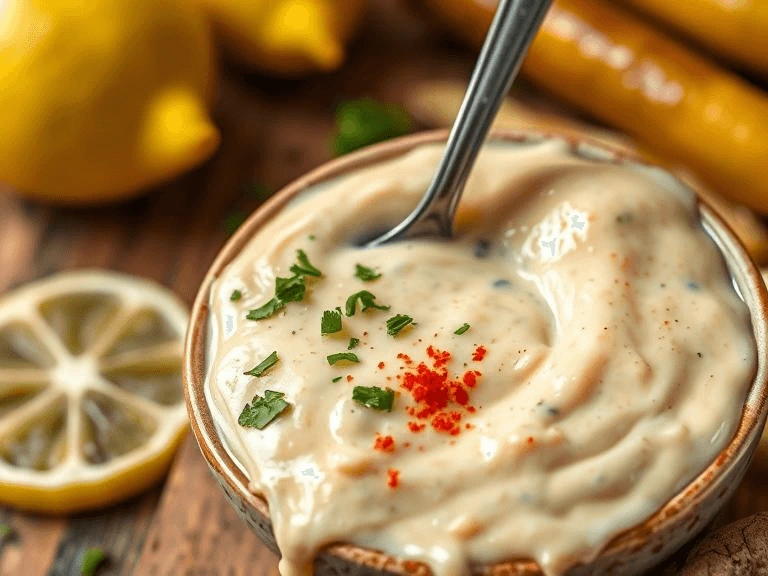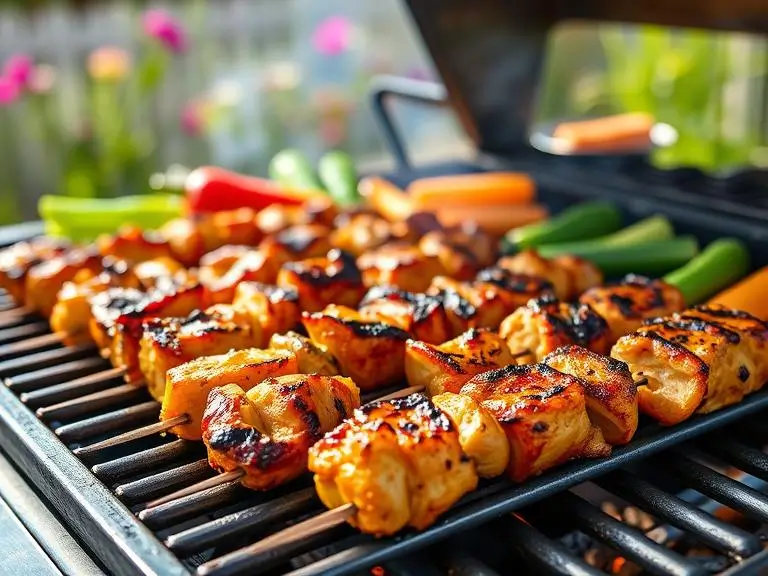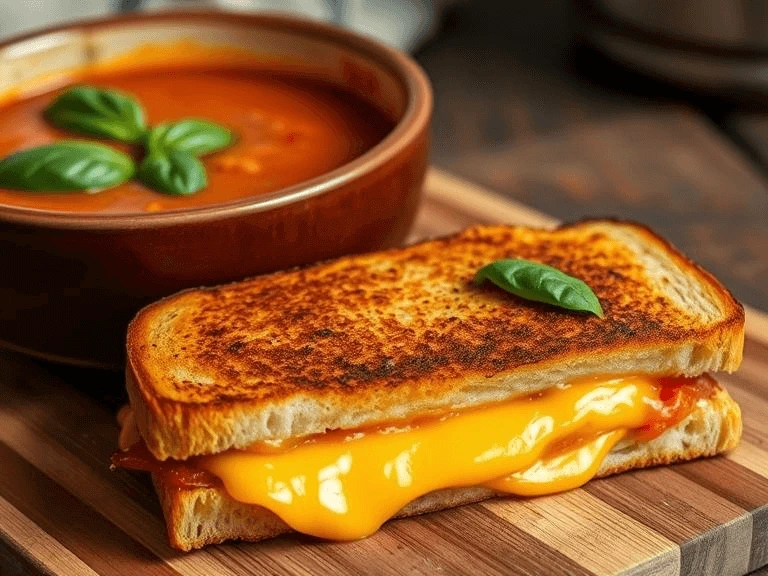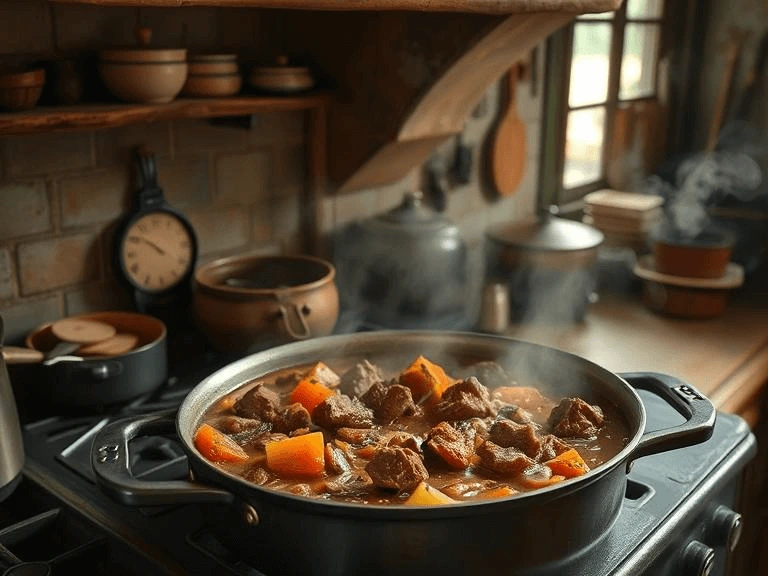Smoking Brisket for Beginners: 3 Easy Steps to Juicy Results
Table of Contents
What is the 3-2-1 rule for brisket, and how can you smoke it right?
The 3-2-1 rule (3 hours unwrapped, 2 hours wrapped, 1 hour unwrapped) is meant for ribs, not brisket. Brisket needs more time and care because it’s a tougher, thicker cut. Smoking it low and slow—at 225°F for 10–16 hours—is key to breaking down fat and connective tissue properly.
The secret to perfect brisket is steady heat, good seasoning, wrapping mid-smoke with butcher paper, and letting it rest before slicing. Avoid common mistakes like peeking too often, rushing the cook, or skipping the rest. With patience and the right technique, brisket comes out juicy, tender, and full of smoky flavor.
Smoking Brisket for Beginners: 3 Easy Steps to Juicy Results
Ever wondered why your brisket turns out dry while others are slicing into tender, juicy perfection? You’re not alone. Smoking brisket for beginners can feel like stepping into a secret club where everyone knows the rules—except you.
If you’ve tried and failed or you’re just now gearing up for your first brisket cook, this guide is for you. Whether you’re planning your next backyard BBQ or simply want to master a new skill, learning the best way to smoke a brisket is a total game-changer.
The challenge? Brisket is a tough cut of meat that demands time, patience, and just the right method to transform it into melt-in-your-mouth goodness. Many first-timers either undercook or over-smoke it, missing that perfect, flavorful bite. That’s where this guide comes in.
In this article, you’ll discover everything you need to know about smoking brisket for beginners—in just 3 easy steps. We’ll walk you through choosing your cut, prepping your smoker, and cooking low and slow like a pro. You’ll also get tips on the best brisket recipe for your smoker, common mistakes to avoid, and how to guarantee juicy results every time.
By the end, you won’t just be another BBQ hopeful. You’ll be the one serving smoked brisket that’s worth bragging about.
So, grab your apron and get ready—because smoking brisket for beginners is about to get a whole lot easier.
Smoking Brisket for Beginners: In 3 Easy Steps
Smoking brisket can seem like a daunting task for beginners, but with the right approach, anyone can master it. In this guide, we’ll walk you through smoking brisket for beginners in three straightforward steps, ensuring juicy, flavorful results every time. From choosing your brisket to wrapping it and smoking it low and slow, we’ve got everything you need to make your brisket shine.
Tools You’ll Need for Smoking Brisket for Beginners
Before diving into the smoking process, it’s crucial to have the right tools. The proper equipment makes the process easier and ensures the best results. Smoking brisket for beginners doesn’t need to be intimidating—equip yourself with these tools and you’re on your way to success.
Essential Tools for Brisket for Beginners
To get started, here’s a list of the must-have tools to smoke your brisket to perfection:
- Smoker—A reliable smoker is a key element. Whether you choose an offset, pellet, electric, or charcoal smoker, make sure it’s one you’re comfortable with.
- Meat Thermometer—A digital probe thermometer helps monitor your brisket’s internal temperature accurately.
- Sharp Knife—A sharp knife is necessary to trim excess fat from your brisket before cooking.
- Cutting Board—Choose a large, sturdy board with grooves to capture juices when you slice your brisket.
- Aluminum Foil or Butcher Paper—Wrapping your brisket mid-cook helps retain moisture and speeds up the cooking process.
- Wood Chips or Chunks—Add flavor with hardwoods like oak, mesquite, or hickory.
- Water Pan—Keeps the environment in your smoker moist, preventing the brisket from drying out.
- Heat-Resistant Gloves—These protect you from hot surfaces when handling your brisket.
- Spray Bottle—Keeps your brisket moist throughout the long smoking process. Fill it with water, apple cider vinegar, or a mixture of both.
Tool Comparison Table
| Tool | Purpose | Recommended For |
|---|---|---|
| Smoker (Pellet/Electric) | Provides consistent heat and smoke | Beginners and low-maintenance cooks |
| Meat Thermometer | Tracks internal temperature accurately | All skill levels |
| Butcher Paper or Foil | Wraps brisket to retain moisture | Intermediate and above |
| Wood Chips (Hickory/Oak) | Adds smoky flavor to meat | Essential for authentic taste |
| Spray Bottle | Maintains moisture on the surface of brisket | Prevents drying during long smokes |
Common Mistakes to Avoid with Brisket Tools
Here are some common mistakes to avoid when using your tools:
- Relying on built-in smoker thermometers: These often measure air temperature, not the internal temperature of the meat. Always use a digital meat probe.
- Using lighter fluid: Lighter fluid can affect the flavor of the brisket, so it’s better to use natural charcoal or wood.
- Over-smoking with strong woods: Too much mesquite or hickory can result in a bitter flavor. Mix these with milder woods for a balanced flavor.
- Not using a water pan: Without one, your brisket can dry out during the long smoking process. Always use a water pan to maintain moisture.
Expert Insight
BBQ pitmaster Aaron Franklin advises:
“Temperature control and airflow are more important than fancy equipment. Learn to master those, and you’re well on your way to great brisket.”
That’s why many people find that using a pellet smoker is the best way to smoke a brisket for beginners—it simplifies the process while helping you focus on your technique.
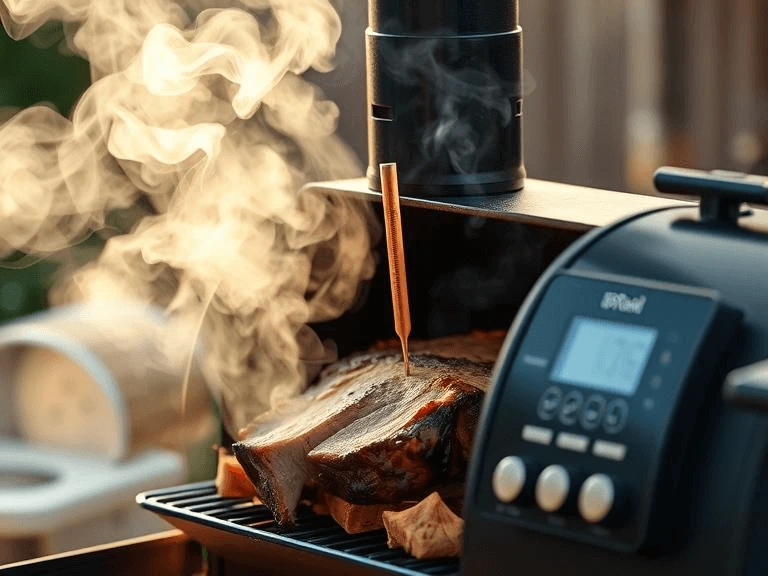
Step 1: Choosing and Preparing Your Brisket
The first step in smoking brisket for beginners is selecting the right brisket. The quality of your meat directly impacts the end result, so it’s important to know what to look for.
How to Choose the Right Brisket
When choosing a brisket, there are two main parts to consider: the flat and the point. For beginners, here’s a simple breakdown:
- Flat: This is the leaner part of the brisket, often favored for slicing and is easier to cook evenly.
- Point: This part has more fat, making it more flavorful and juicy. It’s also great for shredded BBQ.
Tip: When you buy your brisket, choose one with a good amount of fat on it. Fat is your friend—it helps keep the brisket moist during the long smoking process.
How to Trim the Brisket
Trim your brisket by removing excess fat, but leave about ¼ inch of fat on the surface. This fat cap helps retain moisture and flavor while the brisket cooks. You can also trim off any silver skin, a tough membrane that doesn’t break down during cooking.
Step 2: Seasoning and Preparing the Smoker
The next step is seasoning your brisket and prepping your smoker. This is where the real magic happens!
Best Seasoning for Brisket
For beginners, you don’t need a complex rub. A simple salt and pepper combination is often referred to as the “Texas Crutch” for its simplicity and effectiveness. Here’s a simple rub recipe:
- 1/4 cup kosher salt
- 1/4 cup coarsely ground black pepper
Massage this seasoning generously over the entire surface of your brisket. You can also experiment with other ingredients like garlic powder, onion powder, or paprika for extra flavor.
How to Prepare Your Smoker
While your brisket is seasoning, it’s time to fire up the smoker. Here’s how to prepare it:
- Preheat the smoker: Aim for a steady temperature of 225°F to 250°F. This low and slow method is the best way to smoke a brisket to ensure tenderness.
- Add wood chips or chunks: Place your wood in the smoker according to your smoker’s instructions. Choose hardwoods like hickory or oak for a traditional brisket flavor.
- Ensure proper airflow: Make sure your smoker has good airflow to maintain a consistent temperature throughout the cook.
Step 3: Smoking the Brisket to Perfection
Now, it’s time to put your brisket on the smoker and let the magic happen. Remember, smoking brisket for beginners is all about patience.
How Long to Smoke a Brisket
Smoking a brisket can take anywhere from 8 to 14 hours, depending on the size of the brisket and the temperature of your smoker. Plan for at least one hour of cook time per pound of brisket. Here’s a general guideline:
- For a 10-pound brisket, you’ll be smoking for about 10 hours.
Monitor the Internal Temperature
Use your meat thermometer to keep track of the internal temperature of the brisket. The target temperature is 195°F to 205°F. This range allows the connective tissue to break down, making your brisket juicy and tender.
Tip: It’s crucial not to rush the cooking process. Low and slow is the key to achieving the perfect smoked brisket.
Wrapping the Brisket
Once your brisket reaches an internal temperature of around 160°F, wrap it in butcher paper or aluminum foil. This step helps retain moisture and speed up cooking without sacrificing flavor. This technique is known as the Texas Crutch.
Common Mistakes to Avoid While Smoking Brisket
Even seasoned pitmasters make mistakes, but as a beginner, you can avoid these common pitfalls:
- Opening the smoker too often: Every time you open the lid, you lose heat and smoke. Keep the lid closed as much as possible.
- Not checking the temperature: Always use a meat thermometer to ensure the brisket is cooking at the right internal temperature.
- Rushing the process: Brisket requires time to break down and become tender. Don’t try to speed things up by increasing the temperature—this will result in dry meat.
Key Takeaways
- Smoking brisket for beginners doesn’t have to be intimidating. With the right tools, the right meat, and a bit of patience, you’ll create a delicious, smoky masterpiece.
- The best way to smoke a brisket is to cook it low and slow. Monitor the internal temperature and wrap it at the right time to ensure moisture.
- Keep experimenting with different wood chips, rubs, and techniques until you find the perfect smoked brisket recipe for your smoker.
You’ll Love These Too:
- chicken kabob: 3 Quick and Easy Tips for Summer BBQ
- Beef Stew 3 Quick Tips for Perfect Dinner
- How to Make Chicken Kebab at Home Like a Pro
Conclusion: Your Journey to Perfect Smoked Brisket
Smoking brisket for beginners doesn’t have to be overwhelming. By following these three easy steps—choosing the right brisket, seasoning it properly, and smoking it low and slow—you can achieve juicy, tender results every time. Whether you’re smoking for a family dinner or a backyard BBQ, knowing the best way to smoke a brisket can make all the difference in the final outcome.
Expert Tip: The best brisket recipe for your smoker might take time to perfect, but each cook will bring you closer to that melt-in-your-mouth smoked brisket you’ve been dreaming of.
Now that you’re equipped with the knowledge, it’s time to fire up the smoker and start experimenting. Whether you’re smoking your first brisket or perfecting your technique, remember: practice makes perfect. Your smoked brisket journey is just getting started!
Ready to try your hand at smoking brisket? Gather your tools, pick up your brisket, and get started today. Don’t forget to share your results with us—tag us on social media or drop a comment below about your experience. Happy smoking!
FAQ Section
1. How long does it take to smoke a brisket?
The time it takes to smoke a brisket depends on its size and the smoker’s temperature, but it typically takes around 1 hour per pound at 225°F to 250°F. For a 10-pound brisket, plan for 10-14 hours.
2. What’s the best way to smoke a brisket for beginners?
The best way to smoke a brisket for beginners is by using a pellet smoker, as it offers easy temperature control. Smoking at a consistent low temperature (225°F) and using wood chips like oak or hickory will yield great results.
3. What temperature should my brisket reach when done?
For tender and juicy results, aim for an internal temperature of 195°F to 205°F. This allows the connective tissue to break down, making the brisket tender and flavorful.
4. Can I use a charcoal grill instead of a smoker for brisket?
Yes, you can use a charcoal grill to smoke brisket. Just set it up for indirect heat and add wood chips for smoke. It may take a little more attention, but it’s certainly possible to achieve great results.
5. Should I wrap my brisket during smoking?
Wrapping your brisket in butcher paper or aluminum foil once it reaches 160°F helps retain moisture and can speed up the cooking process. This is commonly known as the Texas Crutch.
6. How do I avoid a dry brisket?
To avoid dry brisket, use a water pan in your smoker, keep the cooking temperature low and slow, and ensure you don’t overcook the meat. Wrapping it halfway through the cooking process also helps lock in moisture.
Did this method work for you? Tell us your results!?
There are no reviews yet. Be the first one to write one.

